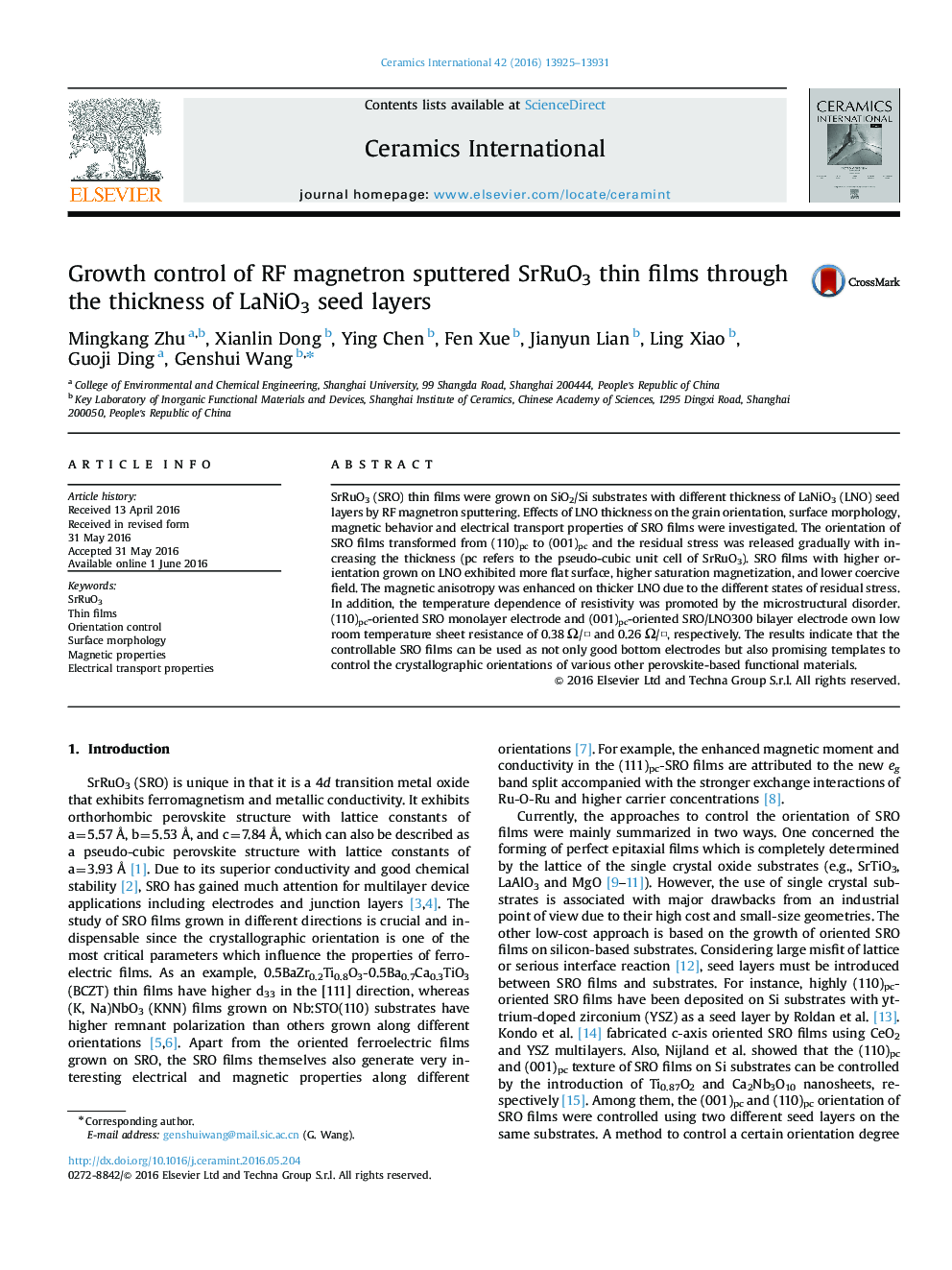| Article ID | Journal | Published Year | Pages | File Type |
|---|---|---|---|---|
| 1458561 | Ceramics International | 2016 | 7 Pages |
SrRuO3 (SRO) thin films were grown on SiO2/Si substrates with different thickness of LaNiO3 (LNO) seed layers by RF magnetron sputtering. Effects of LNO thickness on the grain orientation, surface morphology, magnetic behavior and electrical transport properties of SRO films were investigated. The orientation of SRO films transformed from (110)pc to (001)pc and the residual stress was released gradually with increasing the thickness (pc refers to the pseudo-cubic unit cell of SrRuO3). SRO films with higher orientation grown on LNO exhibited more flat surface, higher saturation magnetization, and lower coercive field. The magnetic anisotropy was enhanced on thicker LNO due to the different states of residual stress. In addition, the temperature dependence of resistivity was promoted by the microstructural disorder. (110)pc-oriented SRO monolayer electrode and (001)pc-oriented SRO/LNO300 bilayer electrode own low room temperature sheet resistance of 0.38 Ω/□ and 0.26 Ω/□, respectively. The results indicate that the controllable SRO films can be used as not only good bottom electrodes but also promising templates to control the crystallographic orientations of various other perovskite-based functional materials.
